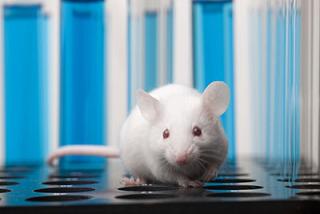Identifying the genetic changes that underlie disease opens doors, converting a problematic variation in DNA code into something that can be used for good. It becomes a long sought-after explanation for a mysterious illness, a marker for diagnosing others, and a touchpoint for connecting communities of patients and doctors.
But all too often what’s still lacking is an explanation for why the DNA variant manifests as a specific set of symptoms, and how to alleviate them.
To address these unknowns, the Utah Genome Project (UGP) assembled the Model Organism Advisory Board with U of U Health mouse geneticist and pancreatic cancer investigator Charlie Murtaugh, PhD, as director. The board advises UGP investigators on using model systems — including cell culture, zebrafish, mice and fruit flies — to explore disease in-depth. Uncovering the physiological processes that go wrong in disease can lead to a new understanding and novel approaches for treatment.
MOAB is supporting a range of projects from investigating metabolic syndromes to bipolar disorder. Two ongoing studies are highlighted below.
Kabuki Syndrome
Individuals with a rare disease called Kabuki Syndrome are recognized by their distinctive facial features: arched eyebrows, broad nose and large, prominent ears, but among the multiple anomalies that cause health issues, heart defects are one of the most worrisome. In research led by geneticists Maria de los Angeles Serrano, PhD and Joseph Yost, PhD, a small tropical fish called zebrafish is showing how a genetic mutation in the gene KMT2D, known to cause the disease, leads to an abnormal heart. Fish with defects in KMT2D have hyperactivation of a molecular pathway called Notch, leading to early defects in interactions between cells that will become heart and blood vessels. Treating these animals with a drug that inhibits Notch signaling partially restores normal heart development and vasculature. These findings are leading to a new understanding of what goes wrong in Kabuki Syndrome and suggests new possibilities for human clinical studies.
Osteoarthritis
Finding a large family who experience early onset of an arthritis that primarily affects the big toe set Mick Jurynec, PhD, on a quest to find the physiological cause of the painful condition. Sequencing the DNA of family members revealed a rare genetic variation in the gene, RIPK2, involved in inflammation. After recapitulating the defect in zebrafish, the research team found an increased, prolonged inflammatory response suggesting that over time, overactive inflammation destroys the joint. With new insight that inflammation could be causing osteoarthritis rather than being a symptom, Jurynec is now exploring whether similar processes might be involved in instigating other inflammatory diseases, a novel idea that could lead to new approaches for diagnosis and treatment.

